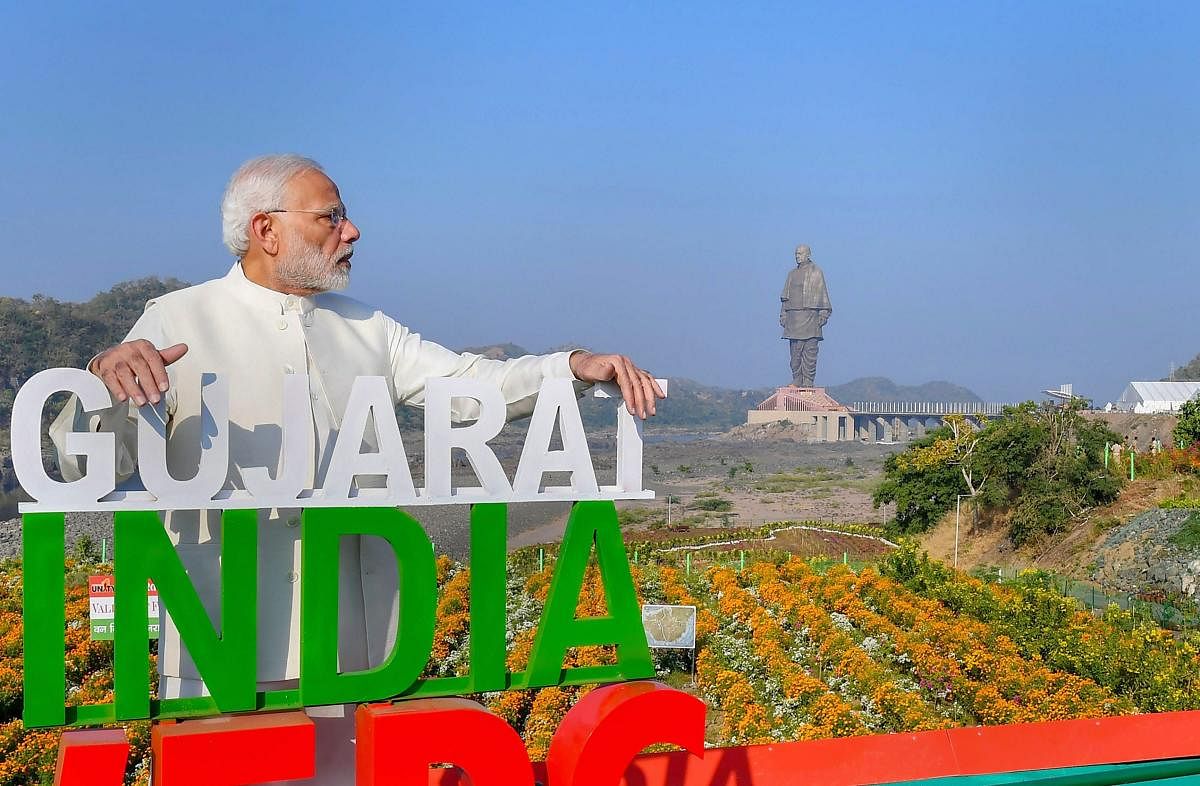
Unveiling the statue of Sardar Vallabhbhai Patel on October 31 in Narmada district’s Kevadiya Colony, Prime Minister Narendra Modi said, “Every decision is being taken to ensure that the fruits of development reach the most vulnerable, without any corruption or favouritism, just as Patel would have wanted it”.
Why is it then that the Sarpanches of 22 Gram Panchayats wrote an open letter to the PM questioning the spending of money on projects like the ‘Statue of Unity’? People living in the 72 villages near the dam protested by not cooking food that day and boycotted Modi’s inaugural ceremony. If the PM’s words are true, why did the adivasis and the local people resist this ‘development’ project?
Historically, and particularly since Independence, the development process in India has excluded adivasis, who have benefitted the least from its fruits. In this context, it is pertinent to look into the aspects of human development in Narmada district in the ‘developed’ state of Gujarat. John Rawls in his work on justice as fairness argues that “They are to be to the greatest benefit of the least-advantaged members of society (the difference principle)”. Built at a cost of Rs 2,989 crore
in 42 months, the Statue of Unity evinces criticism about its necessity or purpose when people are suffering due to lack of basic necessities in Narmada district.
The socio-economic status of the district presents a dismal tale of the lives of adivasis, who constitute 81.6% of its population. The sex ratio is 961, the literacy rate 72.31%; 56.22% use hand pump to draw drinking water in the district, against the state’s average of 11.62%; only 17.21% of households (HHs) have bathroom facility.
As per the Narmada District Human Development Report of 2016, 72.13% of surveyed families were below poverty line (BPL) families; and of them, 64.34% live in extreme poverty. Only 8.46% of BPL families can manage adequate food, many households in the district live in hunger despite many food security schemes. About 30.24% of children in the district were reported as undernourished and suffering from malnutrition in 2013-14.
In Narmada, agriculture and allied activities are the major source of livelihood. Over 85% of the working population is engaged in agriculture; of them, 25.04% are cultivators and 74.96% are agricultural labourers. The monthly income of 82.28% of HHs is less than Rs 5,000, 12.01% of HHs earn up to Rs 10,000 and the remaining 5.71% more than Rs 10,000. Dediapada and Sagbara talukas are classified among the 50 most backward talukas of Gujarat. The poor socio-economic conditions coupled with the poor human development indicators clearly explains the plight of the people, more so of the adivasis, in the district.
Given these socio-economic conditions, people are completely dependent on the land for their livelihood and survival. It is important to note that Narmada is a district governed by the provisions of Article 244 (1) under the Fifth Schedule of the Constitution. It is to be administered through Panchayats (Extension to Scheduled Areas) PESA, legislation of 1996.
As per PESA, the Gram Sabha or the Panchayats at the appropriate level shall be consulted before acquiring land in the Scheduled Areas for development projects and before re-settling or rehabilitating persons affected by such projects in the Scheduled Areas.
Neither the district administration nor the state government has complied with these constitutional provisions in acquiring the land from the local people for the construction of the statue. Till date, only half of the states have framed their own PESA rules. The ‘model state’ in the country, Gujarat, has not even framed these rules, let alone following them.
The print and electronic media have reported that 75,000 adivasis are affected by this statue construction in 72 villages. Out of these, 32 are worst-affected. Adivasis lose their habitat, land, livelihood, forest, water resources and then, above all, suffer displacement. In 19 villages, rehabilitation is not yet complete, and in 13 villages, the commitments, such as land and employment to the local people, are not yet fulfilled.
Medha Patkar, in her letter to the prime minister, asked what was the need to bring 1,500 Chinese workers while excluding the local adivasis, who were forced to migrate elsewhere for their livelihood and survival. A local human rights activist, Anand Mazgaonkar, said that “there are as many as 13 villages with an approximate population of 20,000 which have been directly affected by the land acquisition for the statue project”. The project has not got environmental clearance.
Foundation of violation
The ‘Statue of Unity’ project has been built on a foundation of violation of various constitutional provisions and laws such as the Fifth Schedule, the Environment Protection Act, 1986, PESA, 1996, Forest Rights Act, 2006 and the Land Acquisition Rehabilitation and Resettlement Act (LARR) 2013. It has excluded the adivasis and denied them their land rights and justice.
The Gram Sabha is the competent authority in PESA areas to take a decision on the land acquisition. The State which is supposed to act constitutionally, legally and morally while acquiring the adivasis’ land in Scheduled Areas has blatantly violated the Constitution in constructing the statue of Sardar Patel. Hence, on the eve of its inauguration by Narendra Modi, the local police detained adivasis and activists in order to silence their voices.
Gujarat, and indeed all of India, must revisit the concept of development, which is focused on growth alone, without taking into cognisance the ecology, environment and biodiversity, let alone justice and fairness. The development path pursued since Independence, and especially post-1991 economic reforms, has widened socio-economic inequalities. Project-based development is not the answer, rather we must pursue people-centric development embedded in the ideas of justice and freedom as rightly argued by Amartya Sen, that is, development as “people’s” freedom.
(The writer is PhD Fellow, Centre for Political Institutions, Governance and Development, ISEC, Bengaluru)